The Jagannath temple at Puri is one of the Char Dhams. It is also known as the Purushottama kshetra, Martya Vaikuntha, Sri Khetra, Nilachala Dham etc. Owing to its reverence, there is a huge influx of devotees throughout the year. There are many legends and miracles surrounding this mystic temple. However, there isn’t much information about these legends that the devotees must know/see apart from the main temple when they visit. Having visited this temple numerous times, I thought to share the legends and stories I have learned over the years with my readers so that they don’t miss out on them if they are visiting the Jagannath Temple.
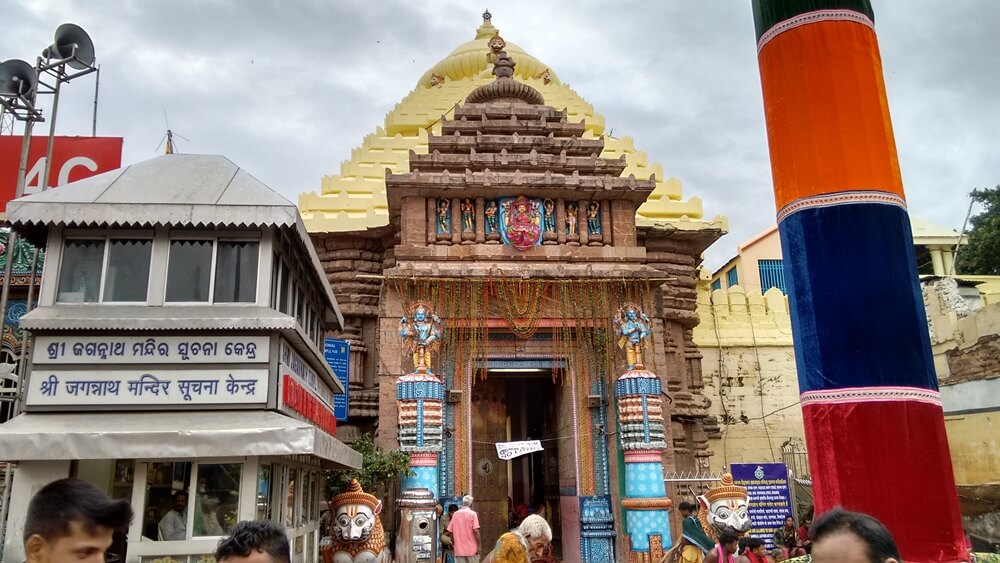
Following are the major things (apart from the main temple) that you must see if you happen to visit the Jagannath Dham:
Patita Pavana Jagannath: On entering through the Singhadwar (the Lion Gate) on the right side, there is a statue of Lord Jagannath etched into the temple wall. This statue is visible from outside the temple and darshan of this statue is considered equipollent to the darshan of the main deities. As non-Hindus and are not allowed inside the temple, the devotees seeking the blessings of the supreme lord can offer their obeisance to this statue.
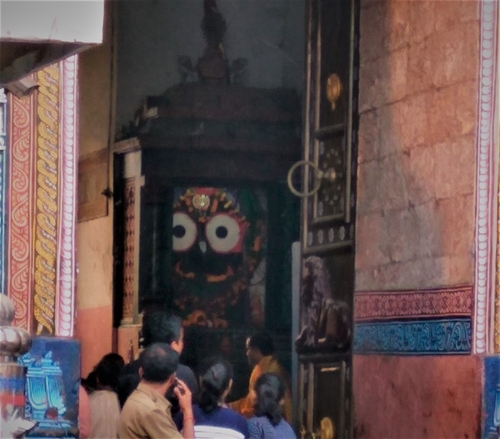
Kalpavata: Kalpavata (wish fulfilling tree) is believed to be situated at the exact centre of the temple. You can locate this temple just behind the Bata Ganesha Temple. It is surrounded by a number of other small shrines like that of Bateswar Mahadeva, Bata Krishna, Markandeya, Balamakunda, Bata Jagannath etc. Devotees tie threads on the branches of this tree and circumambulate it thrice. As per the legends, this tree has been at that place since the Satya Yuga and the four main branches of this tree are believed to represent the four arms of Lord Vishnu.
Rohini Kunda: In front of the Bimala temple is a small water tank which is known as Rohini Kunda. The tank is said to contain karana, or the water of creation. On the base of this tank is a carved stone image of Bhusandi Kaka, the mythical crow who fell into the Rohini Kunda from the branch of Kalpavata and transformed into the four-armed form of Lord Narayana. He got liberated and is hence worshiped as Bata Narayana.
Foot prints of Markandeya: Towards the east of Rohini Kunda, devotees can see the footprints of the great Vaishnava sage Markandeya. He is one of the eight immortals of Hinduism and is one of the most ardent devotees of Lord Vishnu.
The Bimala Temple: The Bimala temple is located on the right side behind the main temple. This temple is one of the four Adi Shakti Peeths (out of the 51 shakti peeths in total) and it is believed that the foot of Shakti fell here. This temple also has much reverence in the functioning and traditions of the main temple.
Model of the original temple: Just behind the main temple, there is a small model of the main temple. This small prototype was first created and after the king approved its design, the original temple was later constructed referring to this model.
Kanchi Ganesha Temple: It is a small shrine located just behind the main temple. It is a black granite idol of Lord Ganesha in dancing pose. As per records, this idol was brought to Puri by the King of Kalinga, after winning a war over Kanchipuram.
The Grand Kitchen: The kitchen area is located on the right side of main temple and visitors are allowed to certain parts of this place. It is believed to be the largest kitchen in the world where over 700 people work on a daily basis to prepare the mahaprasad which is offered to the lord and later sold to the devotees in the Ananda Bazar. It is believed that the food cooked in this kitchen is supervised by Goddess Laxmi herself. No one except for those designated for the work is allowed near the cooking area which is a large dark room. Even water used for cooking is drawn from the holy wells and is poured into small inlets in the walls of the hall. There are two large wells named Ganga and Yamuna from which water used for cooking is drawn. The peculiarity of these wells is that in spite of being so close to the sea, the water in these wells is not salty. Another miracle of this mystic place..!!!! While visiting the kitchen area one must be careful not to touch anyone carrying these water pots as doing so attracts a monetary penalty. A gigantic manual grinding instrument (known as dhinki in the local language) made up of sandalwood is another attraction of the kitchen.
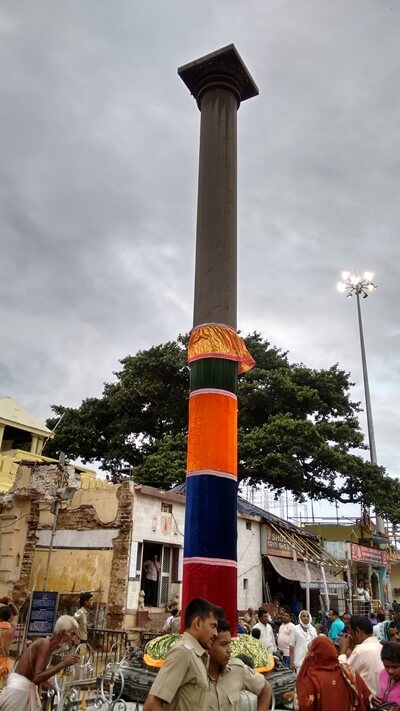
The Surya temple: The idol of Surya (the Sun God) in this temple was brought to the temple along with the Aruna Stambha after the sun temple at Konark was profaned.
The Eshaneswara Temple: Towards the north gate, on the right side there is the Eshaneswara temple. There are steps which lead to the inner sanctum, which is located underground.
Koili Vaikuntha: Koili Vaikuntha is the place where the deities are buried after the nabakalebara ceremony which happens once in 12 years. The deities are buried after performing the obsequies which are symbolic of the cycle of birth and death. Some legends mention that the Pandavas buried the body of Shri Krishna at this place after the supreme lord abdicated his human body.
Imprints of Chaitanya Mahaprabhu: Chaitanya Mahaprabhu is one of the most ardent Vaisanava devotees of the modern age. He disseminated the idea of Bhakti Yoga through the chanting of the holy names which is considered as the most potent medium to achieve God in the age of Kali. It is believed that Lord Krishna himself incarnated in the form of Chaitanya Mahaprabhu to experience the bliss of a pure devotee. Chaitanya Mahaprabhu spent most of his life in Puri promulgating the teachings of Lord Krishna and insisting people to adopt Bhakti Yoga. Just behind the Garuda Stambha (present in the Nata Mandapa of the main temple) is a door whose pillars has the imprints of the fingertips of Lord Chaitanya Mahaprabhu on it. According to a legend, when Chaitanya Mahaprabhu visited the temple, he was so overwhelmed that the divine heat of his touch melted the stone on the pillar and the floor underneath his feet.
Kanapata Hanuman temple: Disturbed by the incessant roaring sound of the ocean at night, Lord Jagannath ordered Samudra (the sea god) to cease the sound and ordered Lord Hanuman to ensure that sound of the ocean does not cross Meghanad Pacheri (outer walls of the temple). Lord Hanuman being an ardent devotee, incessantly stands with his ears placed on the walls to ensure that sound does not cross the boundary walls. This temple is situated near the western gate (Tiger gate) of the temple.
Changing of flags: The flag atop the main temple is known as the Patita Pavana flag. Darshan of this flag, like the Patita Pavana Jagannath, is considered equipollent to the darshan of the original deities. These flags are changed daily after performing certain rituals and ceremonies. Devotees gather around 5 PM every day to witness this flag changing ceremony. The major attraction of this process is the person who changes the flag. Carrying the new flags on his shoulders, the person climbs to the top of the temple with lightning quick speed. It is really astonishing to watch him ascend the temple without any support; certainly an expert in his trade.
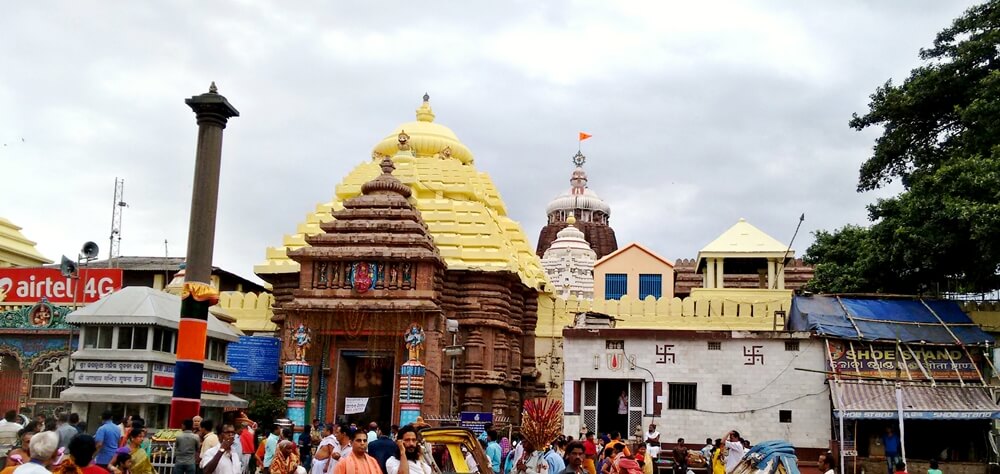
If you are planning to visit the Jagannath Dham at Puri, please look out for all these places within the temple premises. If required, you can seek help from the temple authorities. There are pandas (temple priests) who can help and provide the above details but they are not easy to handle and may charge you exorbitant prices. I always suggest to avoid them.
I hope this article helps readers to understand some legends of this mystic temple. If any reader can add anything more, please do so in the comments section. It is always welcome. JAI JAGANNATH.. _/_


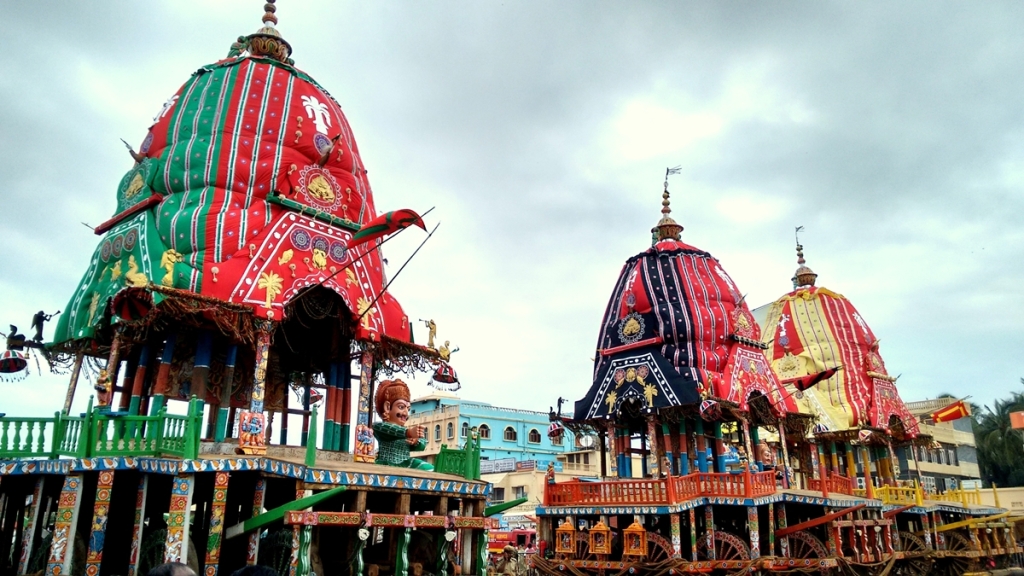
Leave a comment